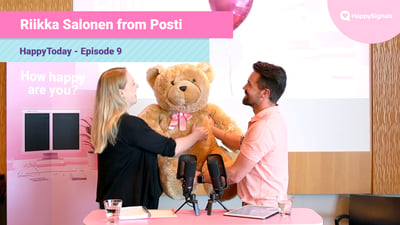In this episode, Pasi and Sami discuss the HappySignals way to achieving Happiness in Employee Experience. Including how to get started, as well as the different approaches and methods to higher levels of Happiness for your end-users.
Starting any new project can be difficult. There is always an excuse or a reason to not begin the project.
Our best advice that we can give you is to start the project of increasing Happiness as soon as possible. This is simply due to the reason that your end-users are already having this negative experience.
The first step you need to work on is understanding your end-users experience and situation. If you do not understand what is going on, then you cannot begin to fix anything.
Continuous measurement of your ITSM Platform, like ServiceNow, is key to finding out what your end-users are unhappy with, as well as the future changes that you make, have a positive impact on their experience.
The second step is then to share this information openly with your partners, for example if you have an outsourced service desk, then sharing this information with the agents in order to build a better understanding with both sides. Working together to fix a common goal is a key priority here. Sharing the data immediately is vital to start having meaningful conversations about the subject, as well as working out what needs to be improved.
The next step is to identify the areas that are impacting your end-users negatively. It is important to start small, with one subject that everyone can commonly agree is not working. Continuous measurement is carried out in order to find out what is working and what is not. Through this measurement you will be able to see what impact this has had on your end-users, as well as showing new figures that can be used to justify improvement in other possible areas.
In order to make a true impact for your end-users you need to show transparency in order to gain trust between partners. This will lead to increased cooperation to focus on the change or goal. Transparency of data is the biggest key to success. Without this, you will find it hard to increase happiness and boost your employee experience.
After identifying the areas that need improvement you can begin to set targets. Get rid of traditional SLA and focus on creating Experience Level Agreements (XLAs). We don't however, recommend you doing this right away. It is first important to understand the data you have collected, being transparent and gaining the trust with your partners/vendors.
The culture of IT and your organisation needs to shift to understanding the employee experience. This is why traditional SLAs are not suitable when measuring and increasing happiness.
As well as this, changes made always need to be seen from the end-users perspective and why/how this change is going to positively impact your end-users experience.



